Wounded mountain
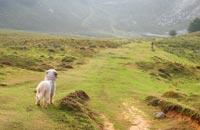
To comply with what Juantxo said, to leave everything as it is in the vicinity of the mountain, is not easy and often ignorance is the excuse of that irresponsibility. The point is that one cannot know what measures to take to take care of the environment, if one does not know how it influences. Therefore, people passing through the mountain are beginning to worry and seek solutions.
In fact, any human activity is influenced and its consequences can be both positive and negative. The same goes for leisure activities on the mountain. However, the impact of these activities is less than that of others, such as industry, forestry and transport infrastructure are more aggressive.
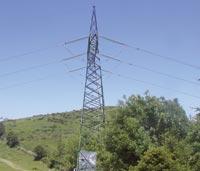
environment than leisure activities.
But, on the other hand, many times leisure activities are carried out in protected areas or little used, so sometimes, although the activity itself is not so hard, the damage that occurs is serious.
In addition, the pressure exerted on the mountain environment increases year after year, as more and more people come to the mountain. That is a green tourism, that is an adventure and a risk, that new sports need new scenarios... The mountain is fashionable. As a result, environmental damage occurs, often without realizing it.
Therefore, it is advisable to know what the impacts are and what their consequences are so as to minimize the impacts. And in this they are working, among others, the mountain engineer Jon Ugarte and the biologist Kiko Alvarez. Both are mountaineers and members of the Naturgintza Foundation, who have spent years studying the influence that leisure activities generate in rural areas and explaining to others what they have seen and learned.
Feet on the ground
In fact, the first effect occurs only with the mountain, since the organic matter present in the soil is destroyed by being trodden. Organic matter, composed of living and dead organisms, has important ecological functions. It also protects the soil from erosion.
Another problem generated by trampling is compaction. The pores are closed and the circulation of air and water is interrupted. As a result, soil characteristics are modified: temperature, texture, nutrients... Of course, all this affects the animals that inhabit the same soil.
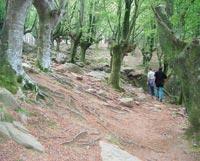
trees are sometimes visible.
In any case, the effects vary depending on the type of soil. Nor is it the same to walk along the track as in the forest. Weather also has a lot to do, as the impact of rain is more severe than on dry soil, and the more people walk, the more evident is erosion. According to Ugarte, we have clear examples of this in the last stretch of the climb to Txindoki, on the road from Arantzazu to Urbia and in Aiako Harria. In these cases a way is marked by which people are asked to climb through which the affected area is somehow limited.
Otherwise, soil alteration has consequences on plants, directly affecting vegetation. When stepping over the same place, they appear clear, sometimes leaving their roots in sight. Over time plant communities change.
Of course, animals are not exempt from perceiving the consequences of activities carried out on the mountain, and suffer direct or indirect damage. Direct damage is accidental death of an animal. It is not uncommon for them to run into the mountains by car. According to the Department of Environment of Andalusia, this is the main cause of death of the Iberian lynx.

In Euskal Herria they also happen. For example, on the Altube motorway they have had to take action, as every year around 500 animals trapped by cars die, including roe deer, wild boars and deer.
Outside the car, hiking also causes discomfort to wildlife. Just hearing the noise and seeing people around is enough for some species to have reproductive problems. The bearded vulture, alimoche and peregrine falcon are very sensitive, as are the eagle Bonelli and the royal eagle.
Other species, on the contrary, get used to people and, knowing that the two legs leave the garbage, they approach the place where there is waste or the public looking for food. Examples are the fox and the gulls. In fact, outside the mountain, even in urban areas, seagulls have multiplied enormously, taking advantage that in landfills they have enough food. Finally, as the habitat itself changes, some species come to replace the existing ones.
Like on earth, in water and in the air
If instead of the earth we look at the water, it is evident that the quality of the water is very low in the frequented areas. First, humans intentionally or unintentionally pour any type of contaminants into water, such as chemicals, sediments, food and even disease-causing pathogenic microorganisms. All of them can cause changes in aquatic communities.
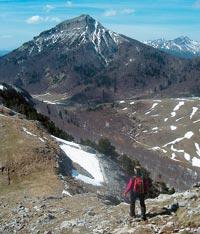
A study conducted in the Pyrenees showed that amphibian populations have declined in lakes and regattas located around the shelters. Pyrenean tritons and other amphibians that inhabit these waters are very sensitive to pollution and, as a consequence of human activity, had an excess of fertilizers in the waters. That is why they have been lost.
Some water damage is evident. However, the effects
on the atmosphere are not always so visible, but some can easily be heard. Who has never met a group of mountaineers who are descending singing at the top? Little will realize that these cheerful songs are noise, like what the chainsaws
or vehicles generate. Ugarte warns that, to avoid annoyances to wildlife, it is worth knowing that most species breed between January and June.
Another way to harm the atmosphere is through the gases emitted by the vehicles. In addition, vehicles lift dust and erode the soil.
The elevation of the eyes towards the environment allows to appreciate the landscape impact. The rocks suitable for climbing are filled with climbers, the most famous peaks full of mountaineers, the ski slopes more crowded than the squares of the town, the infrastructures created in the environment, etc., all attack the
landscape. And as people move, mountain dwellers
change their lives. Many begin to work in the service area, which is to some extent a loss of traditions and culture.
Type of activity, type of damage
It is clear that not all activities have the same environmental impact. According to Alvarez and Ugarte, “if you act with the least diligence, it seems that walking by itself does not produce great damage, and also has advantages, since it allows you to know the nature”. However, it also has contras, some easily avoidable and others less. For example, it is difficult to act on the tread to prevent soil erosion and compaction, as well as avoid direct involvement with vegetation and fauna.
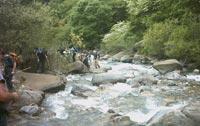
However, mitigation or elimination of other effects is relatively simple. For
example, strange elements that "adorn" the mountain, such as crosses, mailboxes, signals, etc., do not contribute in any way to the environment and it is enough not to remedy the problem.
However, the opening of parallel tracks is more burdensome than these. And installing a tent to spend the night also has important consequences. In any case, the impact will depend on the place chosen and the time elapsed.
As for climbing, there is quite a difference depending on the modality, but in general there is a risk of serious damage if not done very carefully. Therefore, Ugarte and Alvarez defend the development of regulations in some climbing schools. Climbers mainly affect rock nesting birds as well as plants. And they are adapted to survive in difficult conditions and places, so they are not normal.
On the other hand, the lower parts of rock suitable for climbing are usually stepped and compacted, and often climbers remove plants. In addition, magnesium sulfate used to scale erodes calcium carbonate rocks.
Escalation also poses more general problems such as waste abandonment, massification, etc. But these activities also occur in many others. In general, the more people do, the more serious the damage. Caving, paragliding, horse riding... still a few do, but when they get fashionable somewhere, the consequences are immediate.
In any case, regardless of the activity, its attitude and
responsibility with the environment are of particular importance. That is why it is important to remember what Juantxo said: to try to leave everything as it is. In addition, Jon Ugarte and Kiko Alvarez ask mountaineers to defend their environment from other attacks. According to them, “although only from a standpoint of its own, it is worth preserving and protecting nature.”
Naturgintza Foundation
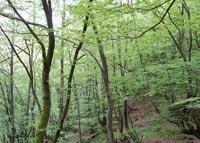
The Naturgintza Foundation arises at the initiative of a group of friends. Concrete actions aim to fill the holes that the administration cannot cover.
Among the main objectives of the nature industry is the conservation and promotion of biodiversity, as well as the promotion of leisure activities that allow to know nature. In addition, special attention is paid to forests and they want to help ensure that traditional life is not lost. This is an open project, sponsored by partners and companies.
UIAA Code of Ethics

The International Mountain and Climbing Federation UIAA launched in 2001 a code of ethical conduct in the mountains. He alludes to several aspects and in terms of environment establishes thirteen points in his eighth article:
- We will take measures to protect the environment and try to ensure that our friends also comply with them.
- If possible, we will approach using public transport.
- To avoid erosion and avoid discomfort to living beings, we will choose the most appropriate way to carry out the climb and descent.
- We avoid noises.
- In times of nesting and chickens
breeding, we will not approach their habitat. As soon as you realize that you are, we will communicate it to others.
- On the first climb we will be careful not to damage the biotopes of rare plants and animals.
- In addition to our garbage, we collect and descend the mountain what others have left.
- If there are no toilets, we must defecate at a certain distance from houses, camps, regattas and lakes and take measures to avoid damage to the ecosystem and cause discomfort to the public. In areas of low biological activity frequented by numerous mountaineers, the mountaineer should carry his own excrements.
- In the high mountains the camp must be kept clean. All climbing equipment: fixed ropes, shops, oxygen bottles, must be removed.
- Use as little energy as possible, especially in countries with low wood, so as not to further destroy the forests.
- In case of conflict over access, landowners, authorities and associations must negotiate
the search for solutions for the benefit of all.
- Participation in the implementation of regulations, especially in supporting the dissemination of them and the creation of the necessary infrastructure for their implementation.
- Together with mountain associations and natural groups, we are political actors in the protection of habitats and the environment.
Rival and disaster in the same sport
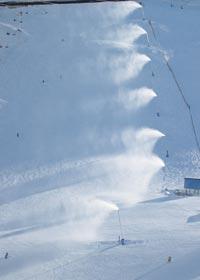
Skiing can be, depending on the modality, the sport that more and less influences. Skiing on slopes, such as alpine skiing, is very harmful to the environment. To make the tracks move the ground, destroy everything that is under the tracks, keep the snow artificially, build numerous infrastructures around, open new roads, is totally massive...
According to a study conducted this year on the slopes of the Alps, many plant species are lost or endangered and, in addition, more than thirty years are necessary to restore the environment.

At the other end is mountain skiing. Snow is only made at the time it is found, and as snow barely crushes, it hardly affects the environment. In addition, few friends do so for the moment. However, the danger is that more and more people leave the slopes to practice different ski modalities, and as skiers increase, the effects and consequences will be more serious.





